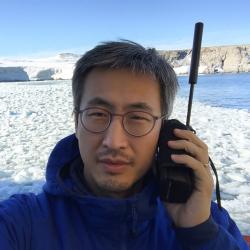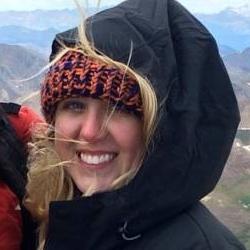Sea-level rise from Thwaites Glacier in West Antarctica was the subject of a special briefing to the All-Party Parliamentary Group for the Polar Regions in the Palace of Westminster, hosted by MP James Gray, on Wednesday 12 June. Around 50 parliamentarians and policy makers involved in polar affairs attended the afternoon briefing by Principal Investigators of the International Thwaites Glacier Collaboration (ITGC), which is funded by NERC and the US National Science Foundation.
Won Sang Lee is a principal research scientist at the Korea Polar Research Institute. His research interests include cryoseismology; hydroacoustics; ice sheet modeling; and other related subjects to the cryosphere.
Lee is a lead principal investigator on the South Korea-led LIONESS-TG project. He has been a chief scientist/science lead/co-investigator on Antarctic field programs since 2006. He and his research group will sail down to Antarctica to establish a multidisciplinary observation network (land/ice/ocean) to investigate subglacial hydrology, ocean heat delivery/geothermal heat flux, ice mass balance, and postglacial rebound in the Thwaites Glacier region, which would help to reduce the uncertainty in the projection of future sea level rise.
Emily Schwans is a PhD student at Penn State. She is an outlet-glacier modeler focused on processes governing glacial stability. Her interests lie in improving numerical models of the cryosphere to better reflect ongoing changes and forecast future behavior. She also uses models to understand how glacier systems respond to environmental changes. As a member of the GHOST team, Emily uses models to help identify and prioritize field targets. She plans to incorporate collected data into her simulations to better project the evolution of Thwaites Glacier in the context of sea-level rise.
High-tech seals gather data to help predict the future of Thwaites Glacier, by Carolyn Beeler of Public Radio International: The World.
A two-month stint as a research-vessel cook was Jack Gilmore's first trip outside of the United States, by Carolyn Beeler of Public Radio International: The World.
Researchers aboard the Nathaniel B. Palmer look forward to returning home, by Carolyn Beeler of Public Radio International: The World.
Seroussi 8: 1699-1710
Seroussi, H., M. Morlighem, E. Rignot, J. Mouginot, E. Larour, M. Schodlok, and A. Khazendar. 2014. Sensitivity of the dynamics of Pine Island Glacier, West Antarctica, to climate forcing for the next 50 years. The Cryosphere 8: 1699-1710.
Goldberg 125: 45-60
Goldberg, D.N., K. Snow, P. Holland, J.R. Jordan, J.M. Campin, P. Heimbach, R. Arthern, and A. Jenkins. 2018. Representing grounding line migration in synchronous coupling between a marine ice sheet model and a z-coordinate ocean model. Ocean Modelling 125: 45-60.








